
Do Flights Get Cancelled Due to Thunderstorms? Understanding Airline Policies
Yes, thunderstorms can indeed cause flight cancellations. These formidable weather events present hazards like lightning, hail, potent winds, and microbursts, which are unsafe for airplanes and their operations. However, not all storms will cause a cancellation; it’s dependent on factors like the storm’s intensity and the airport’s location. Airlines usually offer alternatives such as rescheduling or refunding if a flight is canceled due to a thunderstorm. Now, let’s delve deeper into the varying reasons behind flight cancellations.
Flights can be canceled due to thunderstorms if it is deemed unsafe or impossible to take off. Airlines prioritize passenger safety and may delay or cancel flights during severe thunderstorms to avoid potential hazards such as high winds, microbursts, and other adverse weather conditions.

Table of Contents
- Common Causes of Flight Cancellations
- Impact of Thunderstorms on Flights
- Hazards Posed by Thunderstorms
- Airport Operations and Airline Response
- Elements of Thunderstorms That Affect Flights
- Lightning
- Strong Winds
- Microbursts
- Decision Factors for Flight Cancellations
- Safety of Passengers and Crew
- Impact on Aircraft and Airport Operations
- Severity and Duration of the Thunderstorm
- Air Traffic Control Restrictions
- Availability of Alternate Routes and Airports
- What Happens When Flights Are Cancelled Due to Thunderstorms?
- Rebooking on the Next Available Flight
- Rerouting to Alternative Routes
- Refunds
- Preparations for Possible Thunderstorm Flight Cancellations
- Travel Insurance
- Stay Informed
- Flexibility in Travel Plans
- Book Your Dream Experience
- More Travel Guides
Common Causes of Flight Cancellations

Flight cancellations can be a traveler’s worst nightmare, especially when they come unannounced or are due to factors beyond the airline’s control. One of the most prevalent causes of flight cancellations is adverse weather conditions, including thunderstorms, heavy snow, fog, or strong winds, making it more difficult for planes to take off and land safely.
Thunderstorms, in particular, are significant disruptors of air travel. When thunderstorms roll in, the likelihood of flight delays or cancellations increases. Lightning, heavy rain, and turbulent winds pose significant challenges for airplanes. Pilots must carefully consider whether it is safe to take off or land during a thunderstorm due to the unpredictable nature of microbursts—sudden, powerful downdrafts that can affect a plane’s trajectory.
In addition to thunderstorms, technical issues play a major role in flight cancellations. Aircraft undergo meticulous safety inspections and regular maintenance checks to ensure their airworthiness. However, unforeseen mechanical problems can still arise and necessitate the grounding of an aircraft. Safety always comes first in aviation, and if there’s any doubt about an aircraft’s operational capability, flights may be delayed or canceled until the issue is resolved.
Moreover, air traffic control problems can also lead to flight cancellations. Congestion, technical glitches within air traffic control systems, or strikes by air traffic controllers may precipitate flight disruptions. Delays in obtaining clearances for takeoffs and landings due to crowded airspace can throw flight schedules into disarray, leading to cancellations.
Considering other factors, such as crew scheduling problems, airlines heavily rely on ensuring that their crew members adhere to strict rest requirements and duty time limitations. If an unexpected crew scheduling issue arises (for example, illness), airlines may have no choice but to cancel or delay flights.
Imagine this: An airline notifies passengers that their flight has been canceled due to air traffic control-related issues. While this might induce frustration among passengers hoping to reach their destinations on time, travelers must comprehend that such circumstances are typically beyond the airline’s control.
Understanding these common causes of flight cancellations clarifies why these disruptions occur and highlights the significance of external factors influencing an airline’s ability to operate smoothly.
Impact of Thunderstorms on Flights

Thunderstorms, as beautiful and awe-inspiring as they are from the ground, can wreak havoc on flight schedules. From strong winds to lightning strikes, these natural phenomena present several challenges for airlines and pose potential dangers to aircraft and passengers.
Hazards Posed by Thunderstorms

and powerful winds can create unsafe conditions for planes in the air and ground. Pilots navigate these storms cautiously due to the threat of lightning strikes, but modern aircraft are designed to withstand such occurrences. It’s not the lightning that poses a significant risk to flights, but rather the associated weather conditions like turbulence and wind shear. Microbursts, sudden downward drafts of air that spread out when they hit the ground, can be particularly dangerous during takeoff and landing.
Microbursts are like mini-whirlwinds that interfere with a plane’s direction. This makes it challenging for pilots to maintain control during critical flight phases. Rapid wind direction and speed changes can also affect the aircraft’s handling.
Moving on from the dangers of thunderstorms, it’s important to understand how airports and airlines manage these challenges to minimize disruptions.
Airport Operations and Airline Response
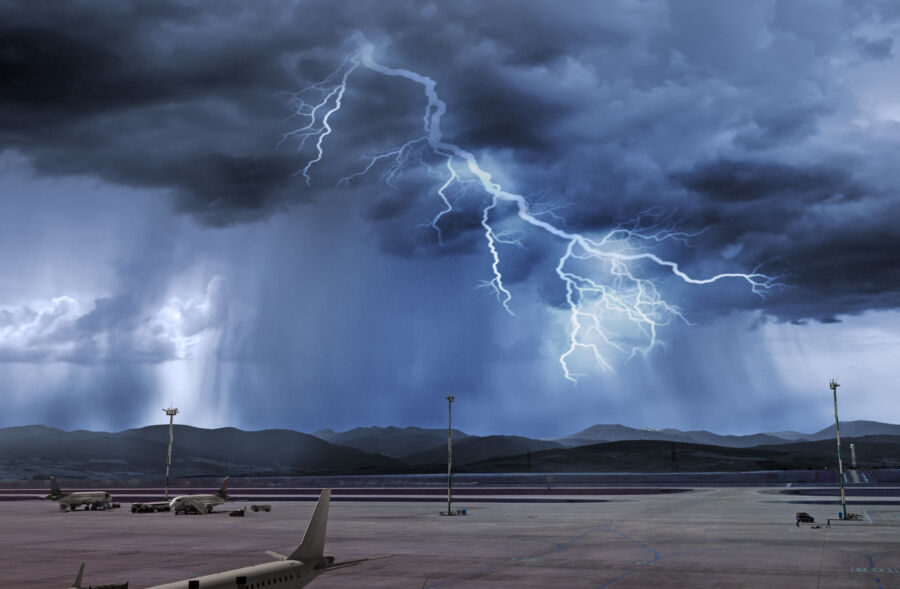
When thunderstorms loom over an airport, all eyes are on the operations team. They must carefully monitor approaching weather systems and make decisions to minimize disruptions. While modern aircraft are well-equipped to handle most weather conditions, the decision to proceed with takeoffs and landings depends on various factors, including visibility, wind speed, and turbulence intensity.
Airlines have established protocols for dealing with thunderstorms and severe weather conditions. These protocols involve constant communication between airline operations centers and flight crews. Airlines may alter flight paths or delay departures based on real-time weather updates and forecasts to ensure passenger safety.
Flight dispatchers work with meteorologists to assess weather patterns along flight routes and make necessary adjustments. Pilots receive detailed briefings before each flight, giving them vital information to make informed decisions about flying through or around potential thunderstorm systems.
Understanding these measures underscores the complexity of managing air travel during thunderstorms while prioritizing passenger safety.
By understanding how airports and airlines manage the challenges imposed by thunderstorms, we gain insight into how critical safety is in ensuring smooth air travel even amidst tumultuous weather conditions.
Elements of Thunderstorms That Affect Flights
Regarding thunderstorms, several key elements can affect flights and airport operations. Let’s examine these elements closely and understand how they can impact the safety of flights and the ability of aircraft to take off and land.
Lightning
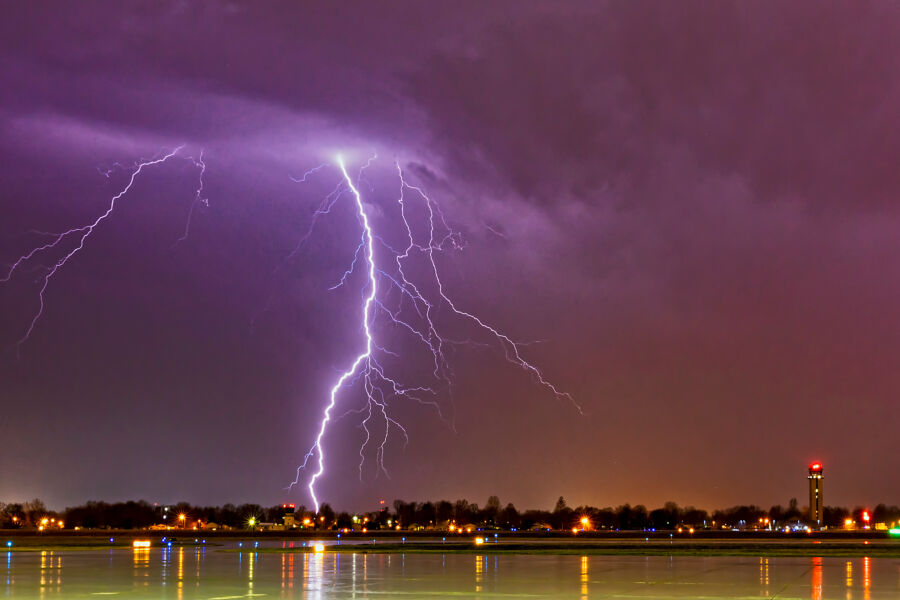
Lightning is one of a thunderstorm’s most visually striking and potentially dangerous aspects. When lightning strikes, it can pose a significant risk to aircraft and passengers. Airports often halt ground operations during lightning storms to ensure everyone’s safety. This means that takeoffs and landings may be temporarily suspended until the storm passes, leading to potential delays or cancellations.
Strong Winds

The high winds associated with thunderstorms can create turbulence and affect the ability of aircraft to take off and land safely. These strong winds can pose a safety risk, making it difficult for pilots to maintain control of the aircraft during critical phases of flight. As a result, flights may be delayed or canceled to avoid the potential hazards these strong winds pose.
Microbursts

Microbursts are sudden, powerful downdrafts of air that can occur during thunderstorms. These intense bursts of wind can significantly impact an aircraft’s ability to maintain its course and altitude. Encountering a microburst during takeoff or landing presents a serious safety concern for pilots, as it can disrupt the aircraft’s trajectory and pose a risk to the safety of passengers and crew. Flights may be canceled or delayed when microbursts are present to avoid potential danger associated with these rapid changes in wind speed and direction.
Understanding these key elements of thunderstorms is essential for airline professionals and passengers alike. By recognizing the potential risks posed by lightning, strong winds, and microbursts, aviation authorities can make informed decisions about flight operations during adverse weather conditions. Additionally, passengers can gain insight into managing flights during thunderstorms, fostering a greater appreciation for the meticulous safety measures implemented by airlines and airport personnel.
By acknowledging these specific elements that affect flights during thunderstorms, airline professionals and travelers can better understand the intricate dynamics when inclement weather impacts air travel.
Now, let’s explore the factors that come into play when airlines make tough decisions about flight cancellations.
Decision Factors for Flight Cancellations

When a thunderstorm breeds, airlines must make tough decisions about canceling flights. These decisions are based on key factors prioritizing passenger safety and operational considerations.
Safety of Passengers and Crew

Airlines prioritize the safety of passengers and crew members when deciding whether to cancel flights due to thunderstorms. Modern aircraft are designed to handle lightning strikes and turbulence, but the safety of everyone on board remains a priority. Pilots undergo extensive training to handle stormy weather, but risks are still associated with flying through severe thunderstorms.
Impact on Aircraft and Airport Operations
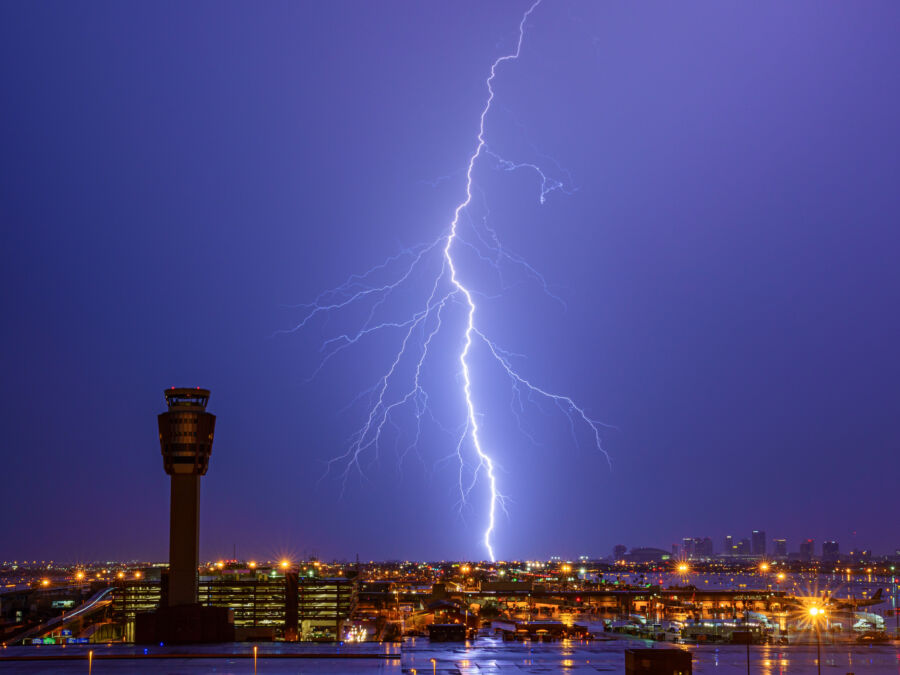
Apart from passenger safety, airlines also consider the potential impact of thunderstorms on aircraft and airport operations. Severe weather conditions can strain aircraft systems and cause delays in airport operations. Heavy rain, hail, and strong winds can affect visibility, runway conditions, and navigation, potentially posing hazards for takeoff and landing. This overall impact is carefully evaluated before deciding whether to cancel flights.
Severity and Duration of the Thunderstorm

Airlines monitor the severity and duration of a thunderstorm before making any cancellation decisions. More intense storms with high wind shear, large hail, or tornado warnings present greater risks for aircraft. The speed at which a storm moves also significantly determines its impact on flight operations. Longer-lasting storms can lead to prolonged disruptions in air travel, influencing the decision to cancel flights.
Air Traffic Control Restrictions
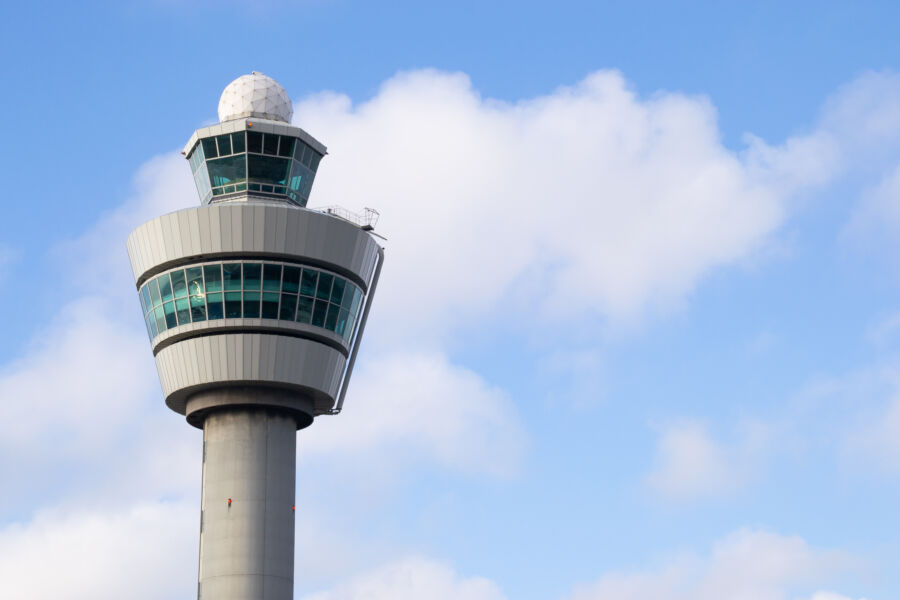
During severe weather events, air traffic control may impose restrictions or alter flight paths to ensure safety. These restrictions can limit the number of available routes and airports, affecting the feasibility of flight operations.
Availability of Alternate Routes and Airports

When thunderstorms disrupt certain flight paths or render specific airports inaccessible, airlines need to assess the availability of alternate routes and airports. This involves considering whether rerouting flights around the storm or diverting them to different airports is viable. The feasibility of these alternative arrangements is a significant factor in determining whether a flight should be canceled or if it can proceed safely.
From ensuring passenger safety to evaluating operational feasibility, these decision factors form the basis for airlines’ judgment when facing the prospect of canceling flights due to thunderstorms.
Understanding why flights may be canceled due to thunderstorms provides insights into what happens next when such cancellations occur. Let’s explore the aftermath of these tough decisions for both passengers and airlines.
What Happens When Flights Are Cancelled Due to Thunderstorms?
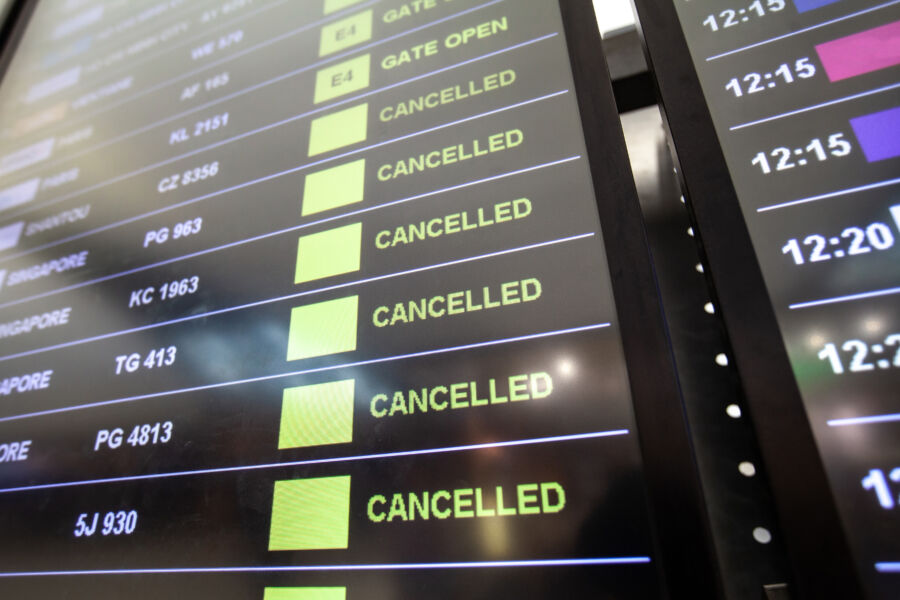
When severe weather like thunderstorms strikes, airlines are often forced to cancel flights to ensure the safety of passengers and crew. It’s frustrating for everyone involved, but safety always comes first. Thunderstorms can disrupt air traffic control operations and create unsafe flying conditions, leading to flight cancellations. So, if you find yourself in this situation, here’s what you can expect as a passenger.
Firstly, it’s important to understand that airlines have policies and procedures for handling flight cancellations due to thunderstorms. Typically, affected passengers are given several options, such as rebooking on the next available flight, rerouting to their destination through a different connection, or receiving a refund.
Rebooking on the Next Available Flight

Rebooking the next available flight is a common option for passengers whose flights have been canceled due to thunderstorms. Airlines will work with affected passengers to find a suitable alternative flight, ensuring they reach their destination as soon as possible without additional charges.
Rerouting to Alternative Routes

In some cases, rerouting through a different connection may be an option. This involves finding an alternative route with available seats to get you to your destination despite the thunderstorm disruptions.
Remember that these options depend on various factors, such as seat availability, the severity of the storm, and the airline’s specific policies. Weather patterns and conditions can also impact the availability of alternate flights.
For instance, if you were traveling from New York to Los Angeles and your direct flight was canceled due to a thunderstorm, the airline might offer you the option to fly from New York to Dallas first and then from Dallas to Los Angeles. It’s not always convenient, but it could provide an alternative way to reach your destination.
Refunds

Another recourse for passengers is receiving a refund for their canceled flight. A full or partial refund may be offered when rebooking or rerouting isn’t feasible or desirable. This gives passengers more flexibility to make arrangements based on their preferences and needs.
In light of these options provided by airlines when flights are canceled due to thunderstorms, it’s important for passengers to stay informed about airline policies and always consider potential travel disruptions caused by severe weather conditions.
With an understanding of how airlines handle flight cancellations due to thunderstorms, it’s essential for passengers to prepare for unforeseen travel disruptions caused by severe weather conditions.
Preparations for Possible Thunderstorm Flight Cancellations

When planning your trip, especially during seasons with frequent thunderstorms, it’s essential to take precautions if your flight gets canceled due to bad weather. There are a few things you can do in advance to minimize the impact of a flight cancellation and prevent it from ruining your travel plans. Let’s get into it.
Travel Insurance

One way to safeguard your travel investment is by purchasing travel insurance that covers trip cancellations due to weather-related issues. While airlines typically do not provide monetary compensation for flights canceled due to bad weather, travel insurance can help cover the expenses incurred from such cancellations. It functions as a safety net, offering financial protection if unforeseen weather conditions disrupt your travel plans.
Stay Informed

Staying informed is crucial regarding potential flight disruptions due to thunderstorms. Monitor weather forecasts for the area you are traveling to, and be prepared for any alerts or updates from your airline regarding possible cancellations or delays. This proactive approach lets you anticipate potential issues and adjust your travel plans before heading to the airport.
Flexibility in Travel Plans

If thunderstorms are forecasted during your travel dates, it’s essential to be flexible with your plans. Consider having contingency options, such as alternate flight schedules or accommodations. Opting for the first flight whenever possible can also reduce the risk of weather-related delays or cancellations later in the day. Having a backup plan and being open to changing your itinerary can go a long way in mitigating the impact of flight disruptions caused by thunderstorms.
By taking these preparatory steps, you can significantly reduce the stress and inconvenience that may arise in flight cancellations due to thunderstorms, ensuring a smoother travel experience even in challenging weather conditions.
Preparing for potential thunderstorm flight cancellations empowers travelers to navigate challenging weather conditions and minimize disruptions, ultimately leading to a more resilient and enjoyable travel experience.



